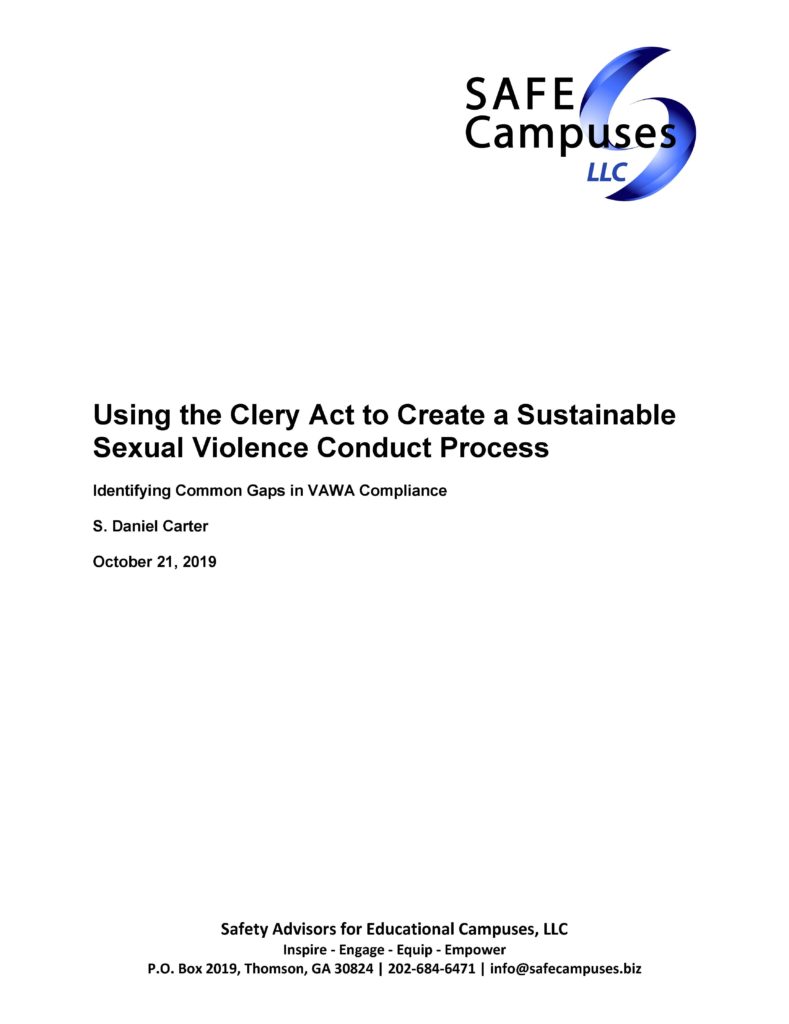In 2013 the federal government enacted the “Violence Against Women Reauthorization Act of 2013” (VAWA) which updated the 1992 “Campus Sexual Assault Victims’ Bill of Rights” portion of the Jeanne Clery Act (Clery Act). In addition to providing expanded reporting and prevention requirements, the intent was to help facilitate the creation of sustainable disciplinary proceedings that are fair to all parties in “cases of alleged dating violence, domestic violence, sexual assault, or stalking”.
In reviewing these policies it is important to note that they are separate and distinct from Title IX of the Education Amendments Act of 1972 (Title IX). As noted by the U.S. District Court for the District of Columbia in 2015 the VAWA amendments “had no effect on Title IX.” (Doe v. U.S. Dept. of Health and Human Services, 85 F. Supp. 3d 1, 5 (2015)). Further, the U.S. Department of Education’s Office for Civil Rights (OCR) stated in their 2017 Title IX Q&A that “when addressing allegations of dating violence, domestic violence, sexual assault, or stalking, institutions are subject to the Clery Act regulations as well as Title IX.” Where there is overlap institutions must meet their obligations under both laws.
Despite the U.S. Department of Education (ED) issuing implementing regulations for the VAWA amendments that took effect July 1, 2015 we have continued to identify common gaps in implementation. This “Quick Briefing” is the first in a series intended to help institutions identify and bridge those gaps to better comply with the Clery Act. The five issues addressed here – scope of proceedings, annual training requirements, designated and prompt timeframes, access to information, and providing the results to complainants and respondents – are among the most important and common where we’ve regularly identified gaps.
There are as many solutions to these challenges as there are institutions of higher education. Each campus community has a unique culture and regulatory framework – whether it be large or small, public or private, residential or commuter. This review reflects merely the beginning of the process.
Next steps include reviewing the implementing regulations (many of which are cited here) and looking to ED’s The Handbook for Campus Safety and Security Reporting, 2016 Edition. Our multidisciplinary team of experts at SAFE Campuses, LLC is also available to help answer your questions.
This paper does not provide legal advice and does not create an attorney-client relationship. If you need legal advice, please contact an attorney directly.

